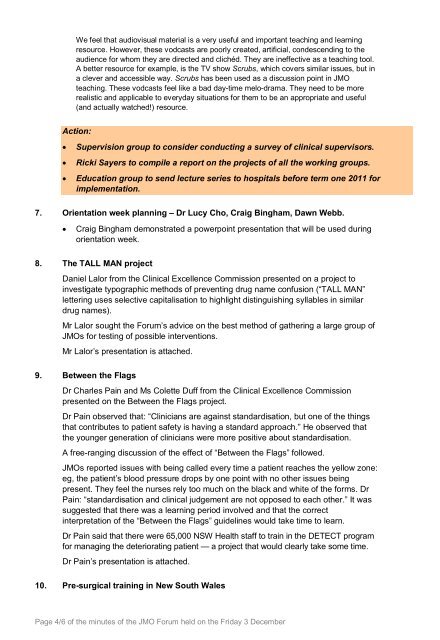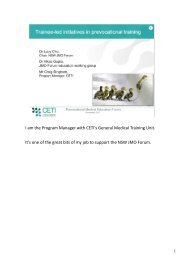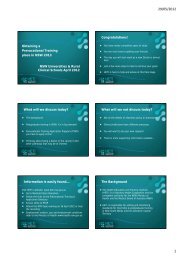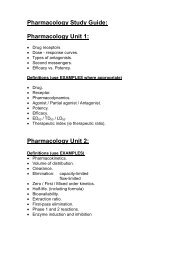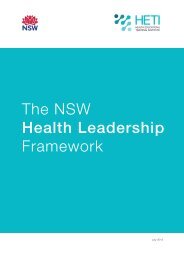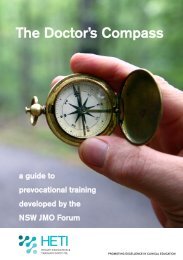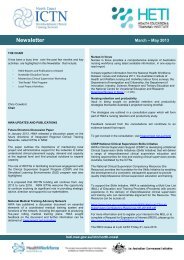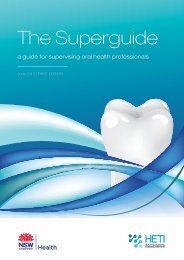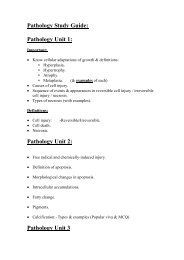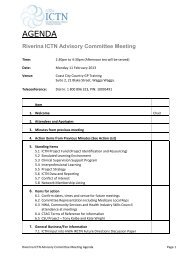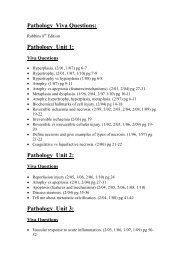Open - HETI
Open - HETI
Open - HETI
Create successful ePaper yourself
Turn your PDF publications into a flip-book with our unique Google optimized e-Paper software.
We feel that audiovisual material is a very useful and important teaching and learning<br />
resource. However, these vodcasts are poorly created, artificial, condescending to the<br />
audience for whom they are directed and clichéd. They are ineffective as a teaching tool.<br />
A better resource for example, is the TV show Scrubs, which covers similar issues, but in<br />
a clever and accessible way. Scrubs has been used as a discussion point in JMO<br />
teaching. These vodcasts feel like a bad day-time melo-drama. They need to be more<br />
realistic and applicable to everyday situations for them to be an appropriate and useful<br />
(and actually watched!) resource.<br />
Action:<br />
<br />
<br />
<br />
Supervision group to consider conducting a survey of clinical supervisors.<br />
Ricki Sayers to compile a report on the projects of all the working groups.<br />
Education group to send lecture series to hospitals before term one 2011 for<br />
implementation.<br />
7. Orientation week planning – Dr Lucy Cho, Craig Bingham, Dawn Webb.<br />
Craig Bingham demonstrated a powerpoint presentation that will be used during<br />
orientation week.<br />
8. The TALL MAN project<br />
Daniel Lalor from the Clinical Excellence Commission presented on a project to<br />
investigate typographic methods of preventing drug name confusion (“TALL MAN”<br />
lettering uses selective capitalisation to highlight distinguishing syllables in similar<br />
drug names).<br />
Mr Lalor sought the Forum’s advice on the best method of gathering a large group of<br />
JMOs for testing of possible interventions.<br />
Mr Lalor’s presentation is attached.<br />
9. Between the Flags<br />
Dr Charles Pain and Ms Colette Duff from the Clinical Excellence Commission<br />
presented on the Between the Flags project.<br />
Dr Pain observed that: “Clinicians are against standardisation, but one of the things<br />
that contributes to patient safety is having a standard approach.” He observed that<br />
the younger generation of clinicians were more positive about standardisation.<br />
A free-ranging discussion of the effect of “Between the Flags” followed.<br />
JMOs reported issues with being called every time a patient reaches the yellow zone:<br />
eg, the patient’s blood pressure drops by one point with no other issues being<br />
present. They feel the nurses rely too much on the black and white of the forms. Dr<br />
Pain: “standardisation and clinical judgement are not opposed to each other.” It was<br />
suggested that there was a learning period involved and that the correct<br />
interpretation of the “Between the Flags” guidelines would take time to learn.<br />
Dr Pain said that there were 65,000 NSW Health staff to train in the DETECT program<br />
for managing the deteriorating patient — a project that would clearly take some time.<br />
Dr Pain’s presentation is attached.<br />
10. Pre-surgical training in New South Wales<br />
Page 4/6 of the minutes of the JMO Forum held on the Friday 3 December


